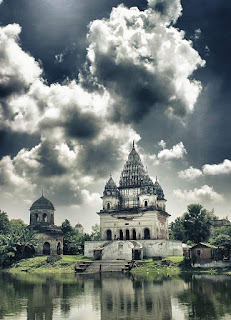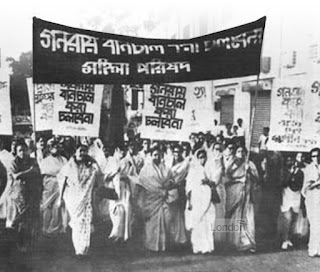Bhubaneswar Shiva Mandir, Puthia Rajshahi
The Puthia Raj family was established by a holy man named Bhatsacharya, who lived in the 16th century. Raja Man Singh, governor of the Mughal emperor Akbar, confiscated the Jagir of the refractory pathan jagirdar of Rajshahi named Lashker Khan and bestowed the Zamindary on the saintly Bhatsacharya for his learning, but he declined. However, his son Pitambar was granted the Lashkarpur estate permanently. On his death, his son Nilambar received the title of Raja from Emperor Jahangir. The Puthia Royal Family estate was the second largest zamindary and the wealthiest in British Bengal. After India's partition, the then Pakistani government abolished the zamindary system and confiscated all Hindu properties. The Royal Family migrated to India shortly afterwards.
Bhubaneshwar Shiva Temple
The Bhubaneshwar Shiva Temple is the largest Shiva temple in Bangladesh. Built in 1823 by Rani Bhubonmoyee Devi, the widow of Raja Jagat Narayan Roy, it overlooks the Shiv Sagar lake. This ornate temple is an imposing and excellent example of the five spire style (Pancha Ratna) temple architecture common in northern India. The corridors have a touch of Jaipuri architecture and in the sanctuary, lies a very large black basalt Shiva Linga, the largest in the country. It is decorated with stone carvings and sculptural works, which were disfigured during the Bangladesh Liberation War in 1971. The invading Pakistani army attempted to displace and break the Shiva Linga, but were unable to move it from its position. The temple is now a protected monument.






Comments
Post a Comment